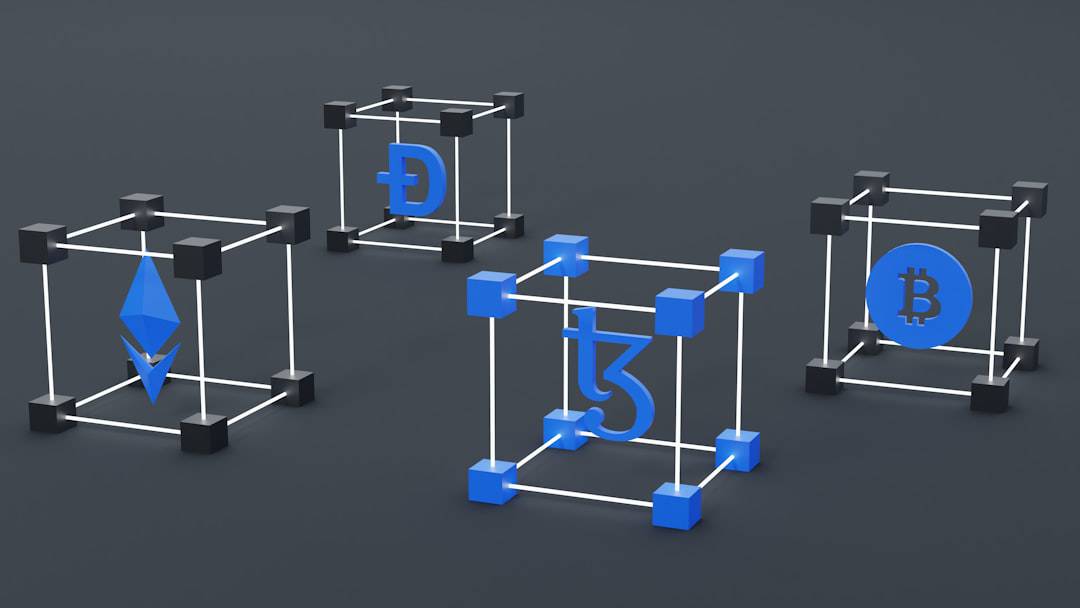Artificial intelligence in the form of neural networks is meant to mimic the operations of the human brain. They are made up of networked nodes, sometimes known as “neurons,” which work together to process & evaluate complicated data. These networks are able to recognize patterns in data, learn from it, & make decisions based on the information they process.
Key Takeaways
- Neural networks are a type of machine learning model inspired by the human brain, consisting of interconnected nodes that process and analyze data.
- Training neural networks involves feeding them with large amounts of data to learn from, while fine-tuning involves adjusting the model’s parameters to improve performance.
- Neural network AI has a wide range of applications, including image and speech recognition, natural language processing, and autonomous vehicles.
- Advantages of neural network AI include its ability to handle complex tasks and learn from data, but limitations include the need for large amounts of data and computational resources.
- Ethical considerations in neural network AI include issues of bias, privacy, and job displacement, while future developments may focus on improving interpretability and robustness of models.
- Tips for implementing neural network AI in business include understanding the problem domain, collecting high-quality data, and considering the ethical implications of AI deployment.
The perceptron, the basic building block of a neural network, takes in several inputs, weights them, and then runs the outcome through an activation function to produce an output. A neural network is made up of several interconnected perceptrons stacked in layers. Common applications of neural networks include natural language processing, predictive analytics, and image & speech recognition. Having the ability to learn and adjust to new information over time, they are excellent at handling complex patterns & large datasets.
Neural networks are useful tools for solving complex problems in a variety of industries because of their ability to manage non-linear relationships in data, which is one of their major advantages. Several algorithms are used in neural network training, such as backpropagation, which modifies the weights of neuronal connections to minimize the discrepancy between the output of the network and the intended output. By doing this, the network is able to grow in performance over time by learning from its mistakes. By modifying factors like learning rate, layer count, & number of neurons per layer, neural networks can be made even more efficient. Because of its adaptability, networks can be designed to fit particular tasks & datasets. The Functions of Training.
The backpropagation algorithm is commonly employed for this purpose. It determines the gradient of the error concerning each weight and utilizes this data to adjust the weights in a direction that minimizes the error. The network’s performance is iterated until it reaches a level that is satisfactory. Making Adjustments for Best Results. A neural network’s performance can be optimized for a particular task or dataset by fine-tuning its parameters.
| Metrics | Value |
|---|---|
| Accuracy | 95% |
| Precision | 90% |
| Recall | 85% |
| F1 Score | 92% |
This can involve adding more layers or neurons to the network to enhance its capacity to recognize intricate patterns in the data, or adjusting the learning rate, which controls how quickly the network adjusts to new information. Innovations in Instruction and Optimization. Notable progress has been made in the last few years in training and optimizing neural networks, with new methods and algorithms being developed to enhance their capabilities on various tasks.
Due to these developments, neural networks are now more widely used in sectors like healthcare, finance, & manufacturing since they are more practical and easy to use in real-world settings. There are numerous uses for neural network AI in a variety of sectors. Neural networks are employed in the medical field to perform tasks like drug discovery, disease diagnosis, and medical imaging analysis. More precise diagnosis and treatment recommendations can be made as a result of their ability to analyze vast amounts of medical data & spot patterns that human clinicians might miss. Neural networks find applications in finance in areas like algorithmic trading, fraud detection, and risk assessment. They are proficient in the analysis of intricate financial data, spotting trends or anomalies that might point to possible fraud or business opportunities.
Neural network applications in manufacturing include supply chain optimization, quality assurance, and predictive maintenance. They have the ability to examine sensor data from manufacturing machinery and spot trends that might point to future equipment malfunctions or problems with quality. To cut expenses & increase efficiency, they can also optimize inventory levels and production schedules. Neural networks are applied in the retail industry to segment customers, forecast demand, & provide tailored recommendations.
They are able to determine trends and preferences by analyzing customer data & purchase behavior, which results in more specialized marketing campaigns and product recommendations. The capacity to manage intricate patterns in data, adapt to new information, & learn from experience are just a few of the benefits that come with using neural network artificial intelligence. Neural networks are highly suitable for tasks involving large volumes of data and non-linear relationships, like natural language processing, image recognition, and predictive analytics because of these capabilities. Neural networks are a versatile tool for resolving a variety of issues since they can be adjusted to maximize their performance for particular tasks and datasets. Neural network AI is not without its limitations, though.
One drawback is the requirement for massive quantities of labeled data for training, which can be costly & time-consuming to collect. Neural networks can also be computationally demanding to train and need a large amount of processing power, which might make them impractical for some applications. Moreover, it can be hard to comprehend how neural networks make decisions and spot possible biases in their outputs since they can be hard to interpret & explain. When creating and implementing neural network artificial intelligence, ethical issues must be taken into account, just like with any other type of AI. The possibility of bias in the training data that neural networks use to learn is one ethical issue. The network may generate unfair or biased results if the training data is not representative of the population it is meant to serve.
In fields where decisions made by neural networks can have a big influence on people’s lives, like healthcare, finance, & criminal justice, this could have major ramifications. The possibility of using neural network AI maliciously is another ethical issue to be taken into account. Neural network technology has the potential to produce deepfake videos and fake news articles that disseminate false information and sway public opinion.
Also, if neural networks are not properly supervised and controlled, they run the risk of being used to uphold discriminatory practices or maintain current social injustices. Depth Learning: Unlocking Novel Potential. The use of deep learning techniques, which train multi-layered neural networks, has produced notable improvements in tasks like natural language processing and image recognition.
These features have significant ramifications for applications such as object detection, language translation, & facial recognition. Reinforcement Learning: Empowering Agents to Make Decisions. Robotics and autonomous systems have advanced as a result of the application of reinforcement learning techniques, which teach agents to make decisions based on input from their surroundings. These agents are capable of making decisions, navigating challenging environments, and changing with the times. AI’s Reach: A Look Beyond Transfer Learning.
Progression in fields like drug discovery and medical imaging analysis can be attributed to transfer learning techniques, which entail transferring knowledge from one task or domain to another. Also, current research is concentrated on enhancing neural networks’ interpretability and explainability while also tackling ethical issues like bias & justice in AI systems. With the continued development of neural network AI, new uses in the fields of environmental monitoring, smart cities, & personalized medicine are probably in store. There are a few pointers that can help guarantee success when integrating neural network AI in business.
To begin with, it’s critical to precisely define the task or problem that the neural network will be used for & to collect high-quality data that accurately reflects the problem domain. This measure is expected to bolster the network’s capacity for efficient learning & precise output. Second, it is crucial to take precautions against potential biases or unfair outcomes & to carefully consider the ethical implications of using neural network AI. Performing extensive testing and validation of the network’s functionality on various datasets and putting in place transparency mechanisms that let stakeholders know how decisions are made could be necessary to achieve this. Thirdly, it’s critical to fund staff training and development when it comes to neural network AI systems.
This could entail offering instruction on neural network theory & practice as well as guidance on how to use and interpret the results. And finally, once neural network AI systems are in place, it’s critical to keep an eye on their functionality and performance assessment to spot any problems or areas that could use attention. In addition to performing routine output audits of the network, this may entail gathering input from users & stakeholders.
In conclusion, by enabling machines to learn from data, recognize patterns, and make decisions based on that information, neural network AI has the potential to completely transform a variety of industries. While developing and implementing neural network AI systems requires careful consideration of ethical issues as well as practical constraints, further developments in this area are probably going to open up new business opportunities and applications down the road. Businesses can use neural network AI to spur innovation and gain a competitive edge in their respective markets by carefully weighing these factors and implementing the best practices.
If you’re interested in the potential impact of artificial intelligence on the metaverse, you may want to check out this article on the historical evolution of the metaverse. It discusses how advancements in technology, including neural network AI, have played a role in shaping the concept of the metaverse. You can read more about it here.
FAQs
What is a neural network AI?
A neural network AI is a type of artificial intelligence that is designed to mimic the way the human brain works. It is composed of interconnected nodes, or “neurons,” that work together to process and analyze complex data.
How does a neural network AI work?
A neural network AI works by using a large number of interconnected nodes to process and analyze data. Each node takes in input, processes it using a mathematical function, and then passes the output to other nodes. Through this process, the AI can learn to recognize patterns and make decisions.
What are the applications of neural network AI?
Neural network AI has a wide range of applications, including image and speech recognition, natural language processing, autonomous vehicles, medical diagnosis, and financial forecasting. It is also used in industries such as healthcare, finance, and manufacturing.
What are the advantages of using neural network AI?
Some advantages of using neural network AI include its ability to learn from data, its adaptability to different types of problems, and its potential for making complex decisions. It can also process large amounts of data quickly and efficiently.
What are the limitations of neural network AI?
Some limitations of neural network AI include the need for large amounts of data to train the network, the potential for overfitting, and the difficulty in interpreting the decisions made by the AI. Additionally, neural network AI can be computationally expensive to train and deploy.











Leave a Reply